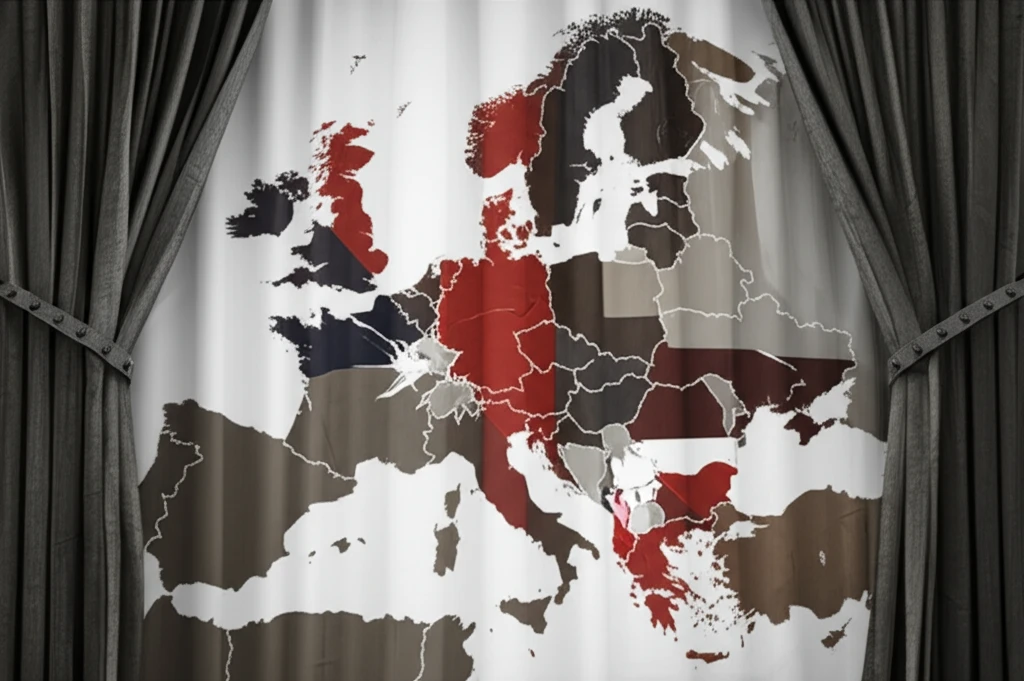
Trading Places: How the Cold War's Economic Divide Still Echoes Today
"Uncover the surprising economic consequences of the Iron Curtain and its lasting impact on global trade and prosperity."
The Cold War, a period defined by ideological clashes and geopolitical tension, left an undeniable mark on the world. Beyond the political and military standoffs, the era's economic consequences continue to ripple through global trade and prosperity. At the heart of this economic division was the Iron Curtain, a barrier that not only separated East and West but also profoundly impacted the flow of goods, services, and ideas.
While the dramatic images of the Berlin Wall are etched in our collective memory, the Iron Curtain's economic story is often overlooked. It wasn't simply about restricted trade; it was a complex system of policies that evolved over time, creating winners and losers on both sides of the divide. Understanding these economic legacies is crucial, especially as the world grapples with new forms of geopolitical fragmentation.
This article delves into the economic consequences of the Iron Curtain, drawing upon new research to quantify its impact on trade, welfare, and economic integration. By examining historical trade data and employing advanced economic models, we'll uncover the surprising ways this period of division continues to shape our world.
How Did the Iron Curtain Impact Global Trade?

The Iron Curtain didn't just represent a physical barrier; it was a complex web of trade restrictions that significantly impeded the flow of goods and services between the Eastern and Western blocs. New research quantifies these trade barriers, revealing that at its peak, the Iron Curtain acted as a tariff equivalent of nearly 50%. Imagine an extra 50% tax on every item traded between East and West – that's the scale of the economic obstacle.
- Trade Reduction: East-West trade flows were roughly halved.
- Welfare Losses: Eastern bloc countries suffered substantial economic disadvantages.
- Intra-Bloc Boost: Trade within each bloc increased, particularly in the Eastern bloc, outpacing Western European integration.
Lessons from the Divide: What Can We Learn?
The economic history of the Cold War offers valuable lessons for today's interconnected world. As new forms of geopolitical fragmentation emerge, understanding the long-term consequences of trade barriers and economic isolation is more critical than ever. By studying the past, we can better navigate the challenges of the present and build a more resilient and prosperous future for all.
